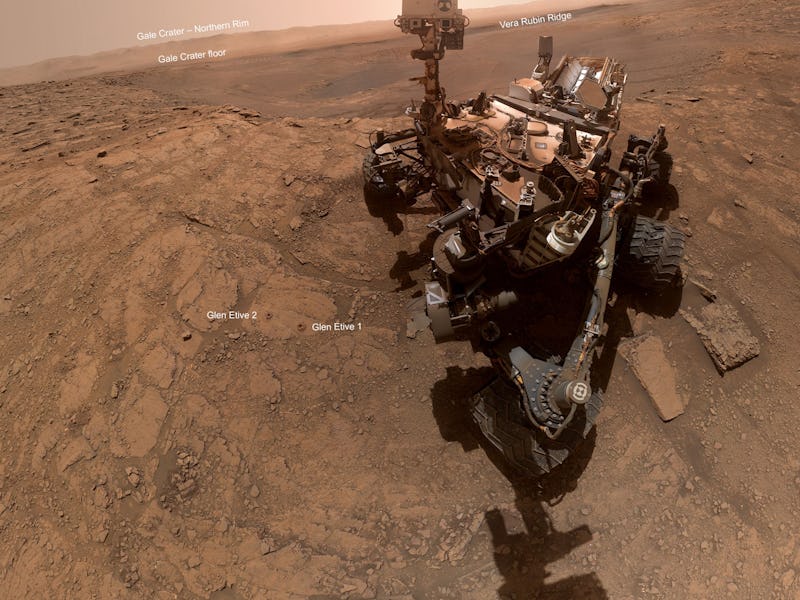Will NASA’s Curiosity rover die on this hill?
Probably not, but it is rolling in an unexpected direction.

NASA’s Curiosity rover may have just found the ultimate shortcut on Mars.
Rather than driving downhill to reach its designated location on Mars’ Greenheugh pediment, a journey that may take up to several months or even years, the rover will instead journey its way uphill and take a path that has never been driven by a NASA rover before.
The new path would get the rover to its new destination way ahead of schedule. And should the little rover find itself at risk, it would simply turn back and follow the longer route.
The Curiosity rover was parked at a drill site by the Hutton crater on the Red Planet where it was analyzing samples that it had dug up. Next up on its exploration to-do-list was to get to the Greenheugh pediment.
NASA's Curiosity snapped this image of the potential route on the Red Planet.
The original plan was for the rover to go downhill to reach the access point to the pediment, following routes that had been planned by NASA as part of Curiosity’s mission. However, while it was at Hutton, Curiosity’s drivers, along with surface properties scientists, discovered another potential route to the top of the Greenheugh pediment that would help it reach its destination much sooner.
“So as a team we had to consider, were the science benefits worth trying to drive onto the pediment now, or we should wait until later as originally planned?” Abigail Fraeman, Planetary Geologist at NASA's Jet Propulsion Laboratory, wrote in a statement.
Following a debate that lasted a few weeks, the team decided to take the risk and have the rover make its way up to the pediment.
In order to prepare it for its treacherous journey, the rover will undergo several attempts to climb up slopes of 30 degrees on the Red Planet. “We’ve never driven up slopes this steep with Curiosity before, and we don’t actually know if the rover will be able to make it all the way up and over,” Fraeman said.
“However, all of our analysis shows this attempt won’t put any unusual risk on the vehicle hardware, so there’s no reason we can’t try!”
Mars has previously claimed the lives of rovers past. Curiosity's predecessor, Opportunity, was smothered in one of the worst dust storms to ever take place on the planet. However, Curiosity will likely not meet a similar fate, and will live long past its designated mission to meet its successor.
NASA will be launching a new rover to Mars this summer, which is on a mission to look for clues of past life on Mars and pave the way for the first human-led mission to the red planet within the next decade.
NASA’s Curiosity rover has been roaming the Red Planet for more than seven years now in order to gather clues to figure out whether Mars had the right environmental conditions to support life during its early history.
Since it landed on Mars in 2012, Curiosity has been roaming the Gale Crater and discovered a lake that may have contained water billions of years ago and an environment that could have possibly supported microbial life.